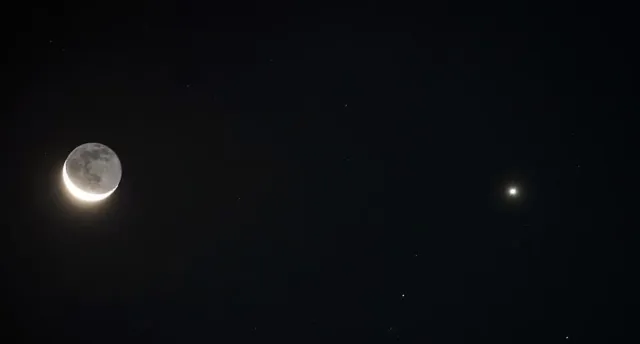
Venus and Moon Conjunction: A Predawn Sky Spectacle
Early risers in the United States are in for a celestial treat on September 19th. The razor-thin waning crescent moon will rise close to Venus, the brilliant morning star, and Regulus, the brightest star in the constellation Leo, creating a stunning predawn spectacle.
For observers in other parts of the world, the lunar disk will actually pass directly in front of Venus, briefly occulting (or hiding) its light. This event will provide a unique opportunity to witness the relative motions of these celestial bodies.
To catch the conjunction, head out about two hours before dawn on September 19th. Look towards the eastern horizon to find the slender, 2%-lit moon. Venus will be visible as a bright point of light less than 1 degree below the moon. Regulus will be positioned just beyond Venus, adding to the visual drama.
Remember that the width of your little finger, held at arm’s length, roughly equates to 1 degree in the night sky, helping you gauge the distances between these celestial objects.
During this time, you may also notice a subtle glow illuminating the shadowed portion of the lunar surface. This phenomenon, known as Earthshine or the Da Vinci glow, occurs when sunlight reflected from Earth illuminates the moon. It’s best observed on nights surrounding the new moon phase, when the lunar disk is ideally positioned to capture this reflected light.
The Earthshine reveals the vast basaltic plains of the lunar maria, which were formed billions of years ago by ancient lava flows. This subtle glow offers a glimpse into the moon’s geological history.
This predawn conjunction of the Moon, Venus, and Regulus promises to be a beautiful and memorable event for stargazers. So set your alarms and prepare to witness this celestial dance!
Disclaimer: This news article is based on publicly available information and may be subject to updates.




